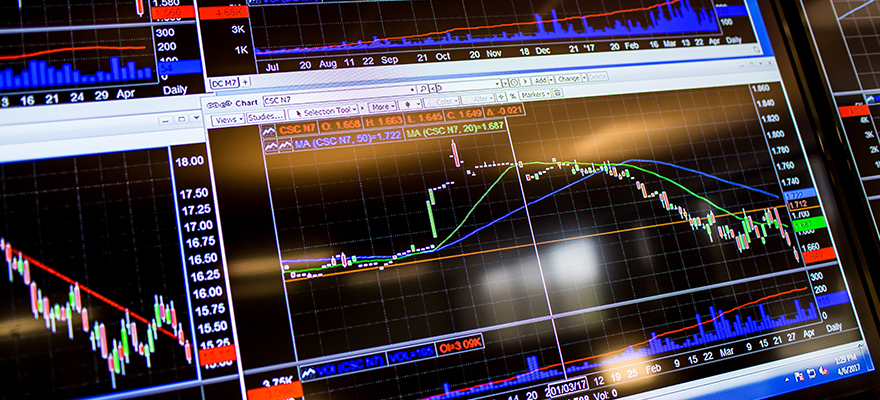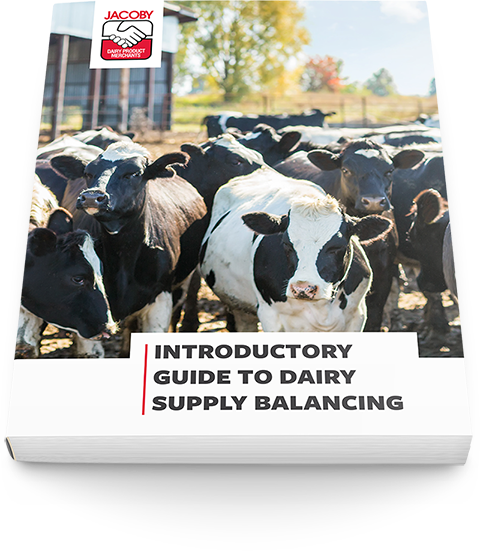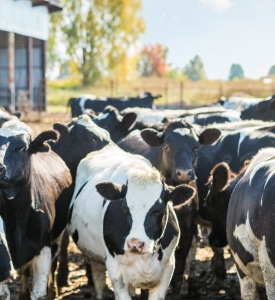Commodity markets are naturally volatile. It’s especially true in the dairy industry, where milk and its derivative products are produced, bought, sold and moved on an intercontinental scale based on the ever-changing demands of modern consumers.
Add to that the fact that success in the industry depends on favorable weather, healthy livestock and sensible regulation. None of those is guaranteed.
Sellers in the industry want to remain profitable despite the chance that prices could dip. Buyers want to keep their expenses in check despite the chance that prices could surge. It’s risky business for everyone involved, from the farmers who produce the milk, to the processors who must decide what to make, to the end users who expect stable prices for the products they want.
In short, industry stakeholders need to manage risk if they hope to survive.

Dairy risk management strategies
While agricultural commodity market trading is nothing new, dairy trading on the Chicago Mercantile Exchange began rather recently in 1996. But markets have since matured rapidly, and that’s opened the door to sophisticated dairy risk management tools aimed at limiting risks for stakeholders participating in a risky and competitive business.
- Futures trading – Most dairy trading is conducted in the futures market because it allows buyers and sellers to secure prices forward in time. This lessens the price risk inherent in an industry where day-to-day prices can vary greatly. Stakeholders on both sides benefit: Sellers can secure ongoing profitability by getting favorable prices that protect them against market price declines in the future. Buyers can get lower prices for products, protecting them against price upswings that add to expenses and put profits in danger.
- Options trading – Options are similar to futures in that they give someone the right (but not the obligation) to buy or sell products within a set timeframe. Call and put options are the simplest types of options traded in commodity markets. A call option buyer will exercise the option if the spot price of a commodity rises above the strike price set out in the agreement. It means he or she can buy the product at the strike price but then sell it right away at the spot price for a profit. A put option buyer will exercise the option to sell when the spot price sinks below the strike price. It allows him or her to offload products at the strike price instead of at the lower spot price.
- Spot trading – Spot trades are far less common and are executed when there’s an immediate need to buy or sell products. Spot market prices are of-the-moment and can change a great deal day-to-day, which explains why most dairy trading is conducted under the relative stability of futures markets instead.
It’s thanks to these markets and the hedging tools used within them that end users pay relatively stable prices for dairy products despite market conditions.
Our role as dairy traders is to use the available risk management tools in conjunction with our intimate knowledge of how the industry works to help customers benefit in any market, whether it’s up, down or stagnant.
Partnership with Jacoby
T.C. Jacoby & Co. has been immersed in the dairy industry since 1949. We think the best dairy risk management strategy of all is partnering with a trader that has matured along with the markets and has seen just about everything. It’s a partnership that could mean the difference between profit and loss.
Let us put our talent and the industry’s tools to work for you. Contact us to talk more about the ways we can help you manage risk. You can also learn more about our full range of services designed to maximize customer profits and promote the growth and overall good of the industry.
Risk management is just one of the industry’s many moving parts. Learn more about the others in our introductory guide to dairy supply balancing.
Introductory guide to dairy supply balancing
Everyone wants balance. Getting there starts here.


